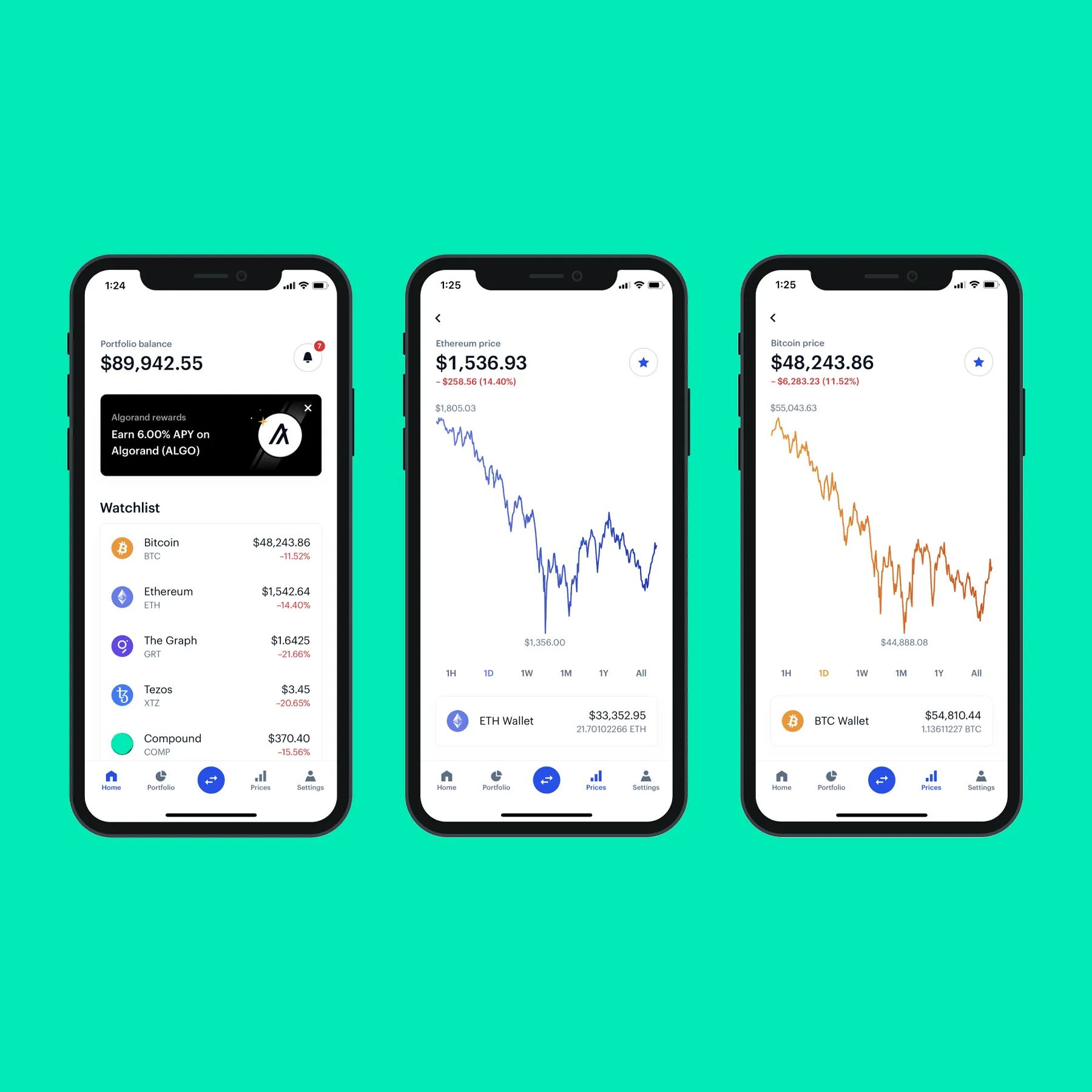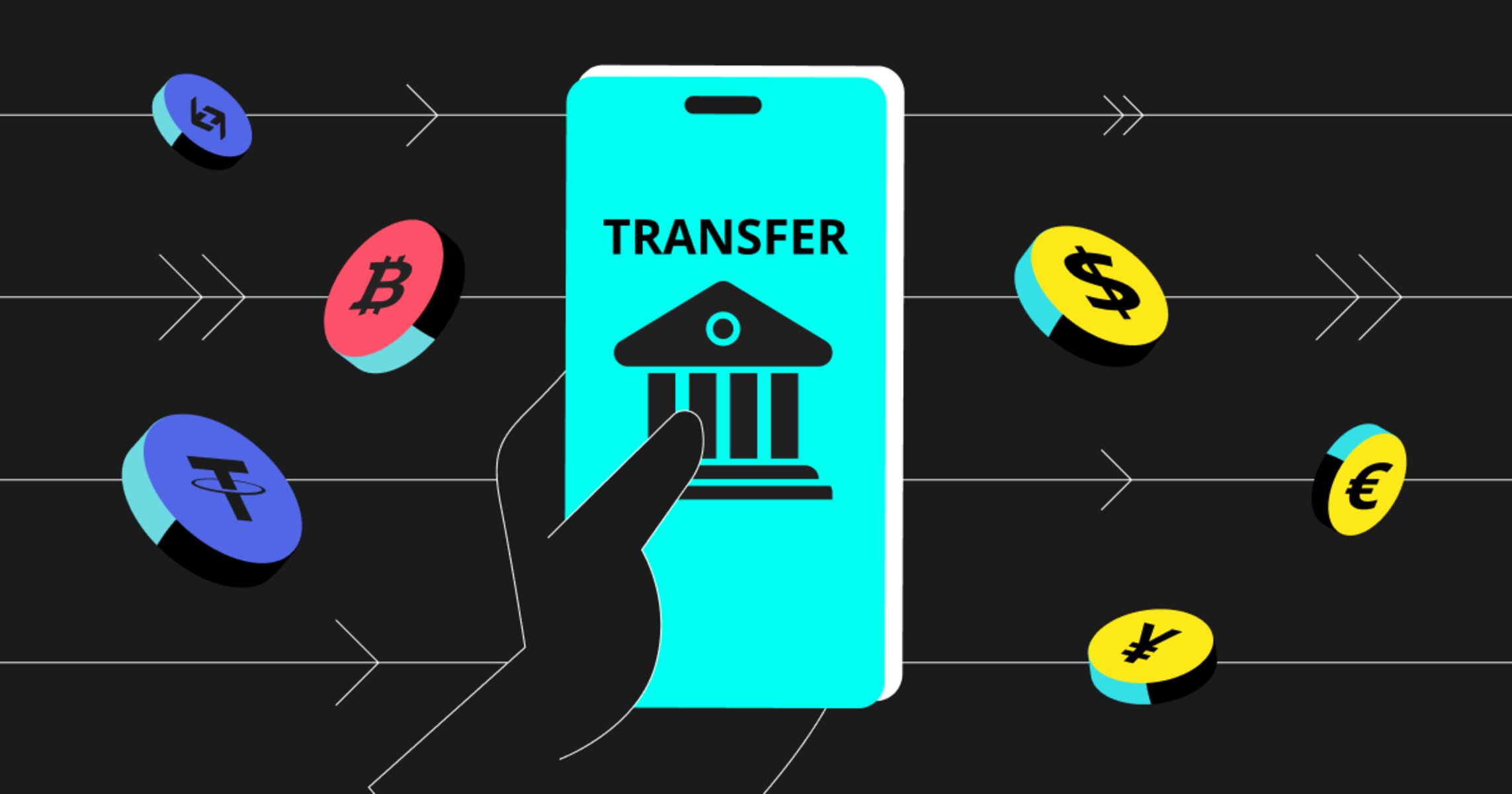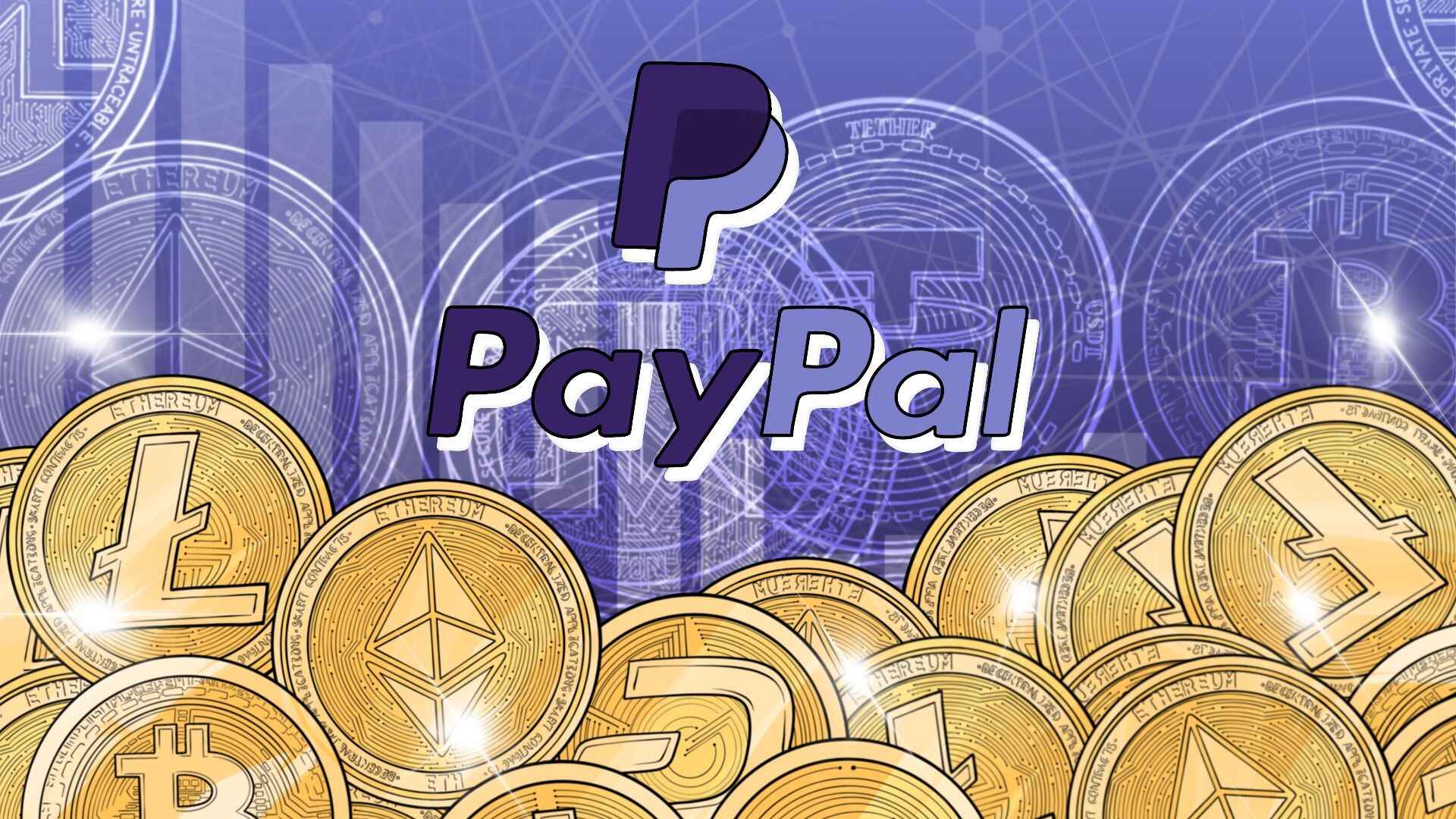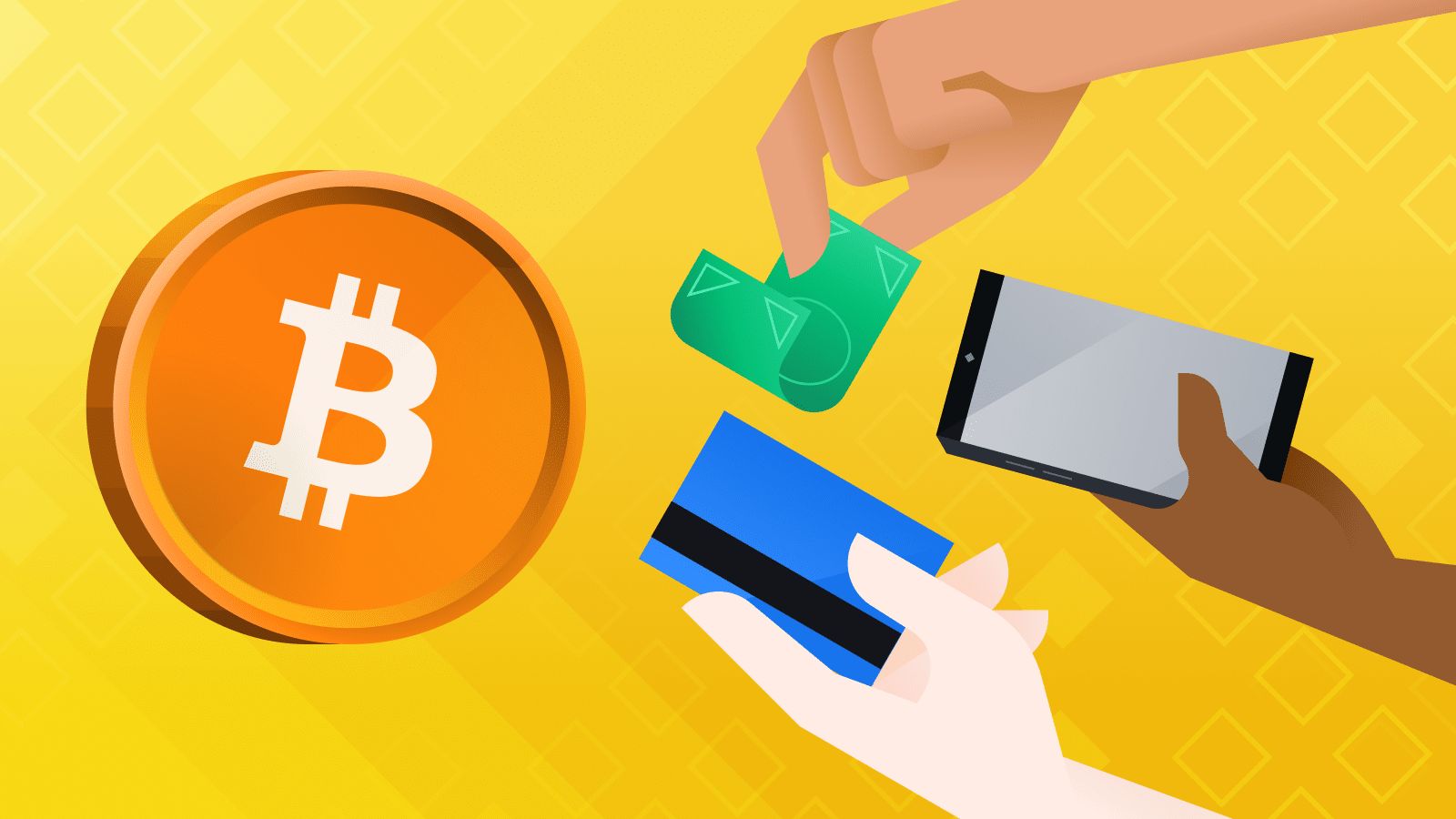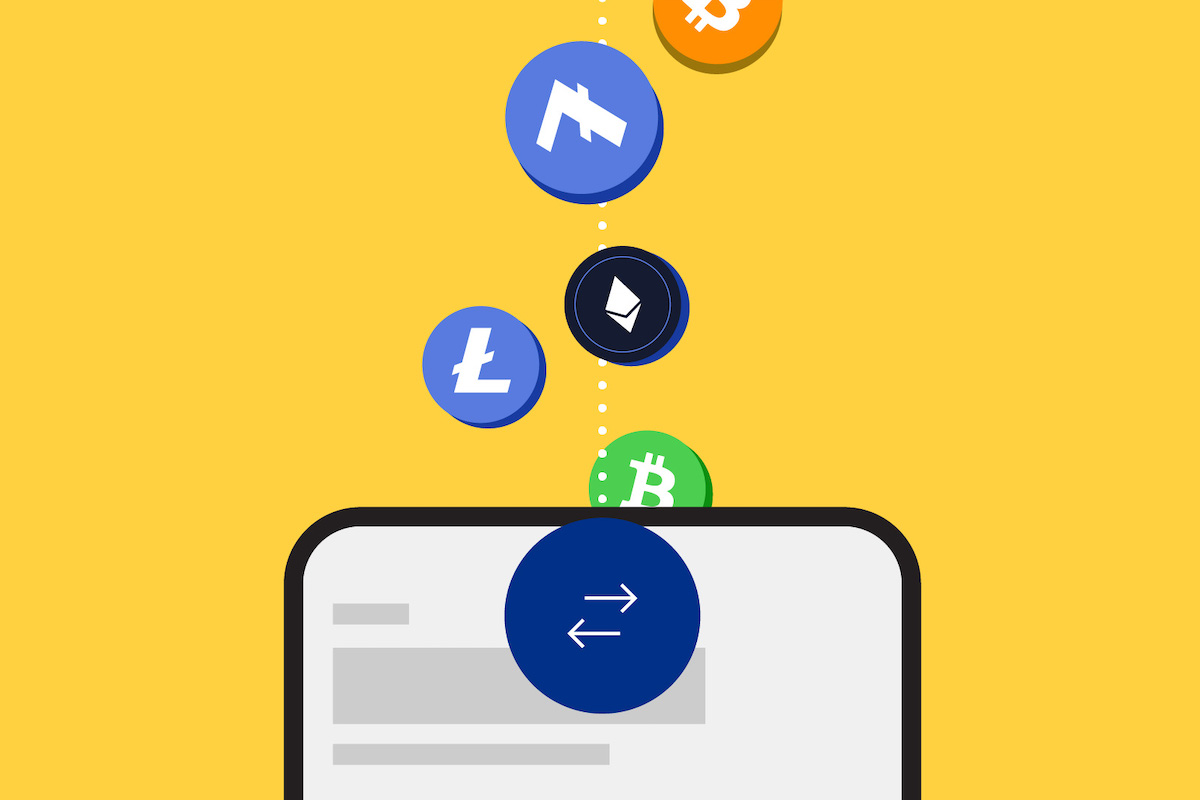Introduction
A blockchain wallet is a secure digital wallet that allows users to store, manage, and transact with cryptocurrencies. It provides a user-friendly interface and enables individuals to send, receive, and monitor their digital assets with ease.
The rise of cryptocurrencies, such as Bitcoin and Ethereum, has brought about the need for a reliable and secure method of storing and accessing these digital assets. Blockchain wallets utilize the power of blockchain technology to provide a decentralized and transparent platform for managing cryptocurrencies.
Blockchain technology, which underpins cryptocurrencies, is a distributed ledger that records transactions across multiple computers, known as nodes. This decentralized nature ensures the security and immutability of the data stored on the blockchain.
A blockchain wallet acts as a digital keychain, allowing users to securely store their private keys, which are required to access and transfer their digital assets. Think of it as a digital version of a traditional wallet, but instead of holding physical cash and cards, it holds digital currencies.
With the increasing popularity of cryptocurrencies and the growing adoption of blockchain technology, having a blockchain wallet has become an essential tool for anyone interested in participating in the digital currency ecosystem.
Throughout this article, we will explore the benefits of using a blockchain wallet, how to choose the right one for your needs, and provide a step-by-step guide on how to create your own blockchain wallet. We will also delve into setting up security measures to protect your digital assets and offer insights into effectively managing and using your wallet.
Are you ready to dive into the world of blockchain wallets? Let’s get started!
What is a Blockchain Wallet?
A blockchain wallet is a digital wallet that allows users to securely store, manage, and transact with cryptocurrencies. It is a software application that interacts with the blockchain network, enabling users to send, receive, and monitor their digital assets.
Unlike traditional wallets that hold physical cash and cards, a blockchain wallet stores the user’s private keys, which are needed to access their digital currency. It acts as a digital keychain, providing a secure and convenient way to manage cryptocurrencies.
The term “blockchain” refers to the technology that underlies cryptocurrencies, such as Bitcoin and Ethereum. A blockchain is a decentralized, distributed ledger that records all transactions across a network of computers, known as nodes. This technology ensures the security, transparency, and immutability of the stored data.
When a user creates a blockchain wallet, they are issued a pair of cryptographic keys – a public key and a private key. The public key acts as a user’s address, which others can use to send them digital currencies. The private key, on the other hand, is kept secret and is used to unlock the wallet and authorize transactions.
One of the key features of a blockchain wallet is its ability to connect to the blockchain network and interact with it. Users can send and receive digital currencies, view their transaction history, and monitor the balance of their wallet in real-time.
Blockchain wallets come in different forms, including web-based wallets, desktop wallets, mobile wallets, and hardware wallets. Each type has its own advantages and considerations, such as accessibility, security, and convenience.
Web-based wallets allow users to access their digital assets through a web browser. They are easy to use and can be accessed from any device with an internet connection. However, they are also more susceptible to hacking and phishing attacks.
Desktop wallets are software applications that are installed on a user’s computer. They offer a higher level of security compared to web-based wallets since the private keys are stored locally. However, they are only accessible from the device on which they are installed.
Mobile wallets are smartphone applications that offer a convenient way to manage cryptocurrencies on the go. They provide a good balance between accessibility and security, but users need to be mindful of securing their device against theft or loss.
Hardware wallets are physical devices that store the user’s private keys offline. They are considered one of the most secure options for storing digital assets since they are immune to online attacks. However, they can be relatively expensive and less user-friendly for beginners.
Now that you have a better understanding of what a blockchain wallet is, let’s explore the benefits of using one in the next section.
Benefits of Using a Blockchain Wallet
Using a blockchain wallet to manage your cryptocurrencies offers a wide range of benefits. Let’s explore some of the key advantages:
- Security: Blockchain wallets provide a high level of security for your digital assets. By leveraging the decentralized and transparent nature of blockchain technology, these wallets ensure that your private keys are stored securely and that your transactions are recorded immutably on the blockchain. Additionally, advanced encryption algorithms protect your wallet from unauthorized access.
- Control: With a blockchain wallet, you have complete control over your digital assets. You hold your private keys, enabling you to access, manage, and transact with your cryptocurrencies at any time. This eliminates the need for intermediaries, such as banks, and gives you the autonomy to make your own financial decisions.
- Accessibility: Blockchain wallets provide easy accessibility to your digital assets. Whether you are using a web-based wallet, desktop wallet, or mobile wallet, you can access your cryptocurrencies from anywhere with an internet connection. This makes it convenient to send and receive payments, monitor your balance, and view transaction history on the go.
- Transparency: Blockchain technology is known for its transparency. All transactions recorded on the blockchain are publicly visible, allowing you to verify and audit the movement of funds. This transparency enhances security and trust, as it eliminates the risk of tampering or fraud.
- Speed and Efficiency: Traditional financial transactions can be time-consuming and involve multiple intermediaries. With blockchain wallets, you can experience near-instantaneous transactions with minimal fees. This makes cross-border payments and peer-to-peer transfers faster and more cost-effective.
- Privacy: While blockchain transactions are transparent, blockchain wallets also provide a level of privacy. Your personal information and transaction details are not revealed in the public ledger. Instead, pseudonyms or unique addresses are used to maintain anonymity.
- Support for Multiple Cryptocurrencies: Blockchain wallets usually support a wide range of cryptocurrencies, giving you the flexibility to manage different digital assets in one place. This eliminates the need for multiple wallets and simplifies the overall management of your portfolio.
These benefits make using a blockchain wallet an attractive option for individuals who want to take control of their financial assets and participate in the world of cryptocurrencies. In the next section, we will discuss how to choose the right blockchain wallet for your needs.
Choosing a Blockchain Wallet
When it comes to choosing a blockchain wallet, there are several factors to consider. Here are some key points to help you make an informed decision:
- Security: Security should be your top priority when selecting a blockchain wallet. Look for wallets that offer robust security measures, such as two-factor authentication (2FA), multi-signature support, and encryption. Additionally, consider whether the wallet has a strong track record of protecting user funds and has undergone external audits.
- Supported Cryptocurrencies: Determine which cryptocurrencies you plan to store and manage in your wallet. Ensure that the wallet you choose supports the specific cryptocurrencies you need. Different wallets have different levels of compatibility with various digital assets, so verify this before making a selection.
- User Interface: The user interface of a blockchain wallet should be intuitive and user-friendly. A well-designed and easy-to-navigate interface will make it easier for you to manage your digital assets effectively. Consider trying out the wallet’s demo or reading user reviews to gauge the user experience.
- Device Compatibility: Consider the devices you plan to use for accessing your wallet. If you primarily use a desktop or laptop, a desktop wallet might be a good option. If you prefer managing your assets on your smartphone, look for mobile wallet options. Also, check if the wallet supports multiple devices to provide flexibility.
- Backup and Recovery: Losing access to your private keys can result in permanent loss of funds. Look for wallets that offer backup and recovery options. This can include features like mnemonic phrases or seed phrases that can be used to restore access to your wallet in case of loss or theft.
- Community and Support: Consider the level of community support and the wallet’s development team. Wallets with an active community and regular software updates tend to offer a more reliable and secure user experience. Look for wallets with a strong user base and active customer support channels.
- Reviews and Reputation: Before finalizing your decision, research the wallet’s reviews and reputation in the cryptocurrency community. Check for any history of security breaches or user complaints. This will help you gauge the trustworthiness and reliability of the wallet provider.
By carefully considering these aspects, you can select a blockchain wallet that aligns with your specific needs. The next section will guide you through the step-by-step process of creating your own blockchain wallet.
Step-by-Step Guide to Creating a Blockchain Wallet
Creating a blockchain wallet is a straightforward process. Follow these steps to set up your own wallet:
- Choose a Wallet Provider: Research reputable wallet providers and select one that meets your requirements for security, supported cryptocurrencies, and user experience. Popular options include Blockchain.com, Coinbase, and Exodus.
- Visit the Wallet Provider’s Website: Once you’ve selected a wallet provider, visit their website to begin the sign-up process. Look for a “Sign Up” or “Create Account” button to get started.
- Create an Account: Fill in the required information, including your email address and a secure password. Some wallet providers may require additional verification steps, such as providing identification documents.
- Secure Your Account: Enable two-factor authentication (2FA) for enhanced security. This typically involves linking your wallet to a mobile authenticator app or receiving SMS codes to verify your identity when logging in.
- Backup Your Wallet: Most wallet providers will prompt you to create a backup of your wallet. Follow the instructions provided to generate a mnemonic phrase or seed phrase. Write down this phrase and keep it in a secure location. It will serve as a backup to restore access to your wallet.
- Set Up Security Measures: Explore the security settings of your wallet and enable any additional security features available, such as multi-factor authentication (MFA) or biometric login options if supported.
- Verify Your Email: Some wallet providers may require you to verify your email address. Check your inbox for a verification email and follow the instructions provided to complete the verification process.
- Access Your Wallet: Once your account is set up and verified, you can access your blockchain wallet. Log in using your chosen credentials and explore the wallet’s features, including sending, receiving, and managing your cryptocurrencies.
- Keep Your Wallet Secure: Regularly update your wallet software and follow best security practices, such as keeping your device and software up to date, using strong and unique passwords, and being cautious of phishing attempts.
Congratulations! You have successfully created your own blockchain wallet. Make sure to familiarize yourself with the wallet’s functionalities and explore additional features and settings to make the most out of your wallet.
In the next section, we will discuss how to set up security measures to protect your blockchain wallet and your digital assets.
Setting Up Security Measures for Your Blockchain Wallet
Ensuring the security of your blockchain wallet is paramount to protect your digital assets from unauthorized access or theft. Follow these important security measures to safeguard your wallet:
- Enable Two-Factor Authentication (2FA): Two-factor authentication adds an extra layer of security to your wallet by requiring a second verification step, usually in the form of a unique code sent to your mobile device. Enable 2FA on your wallet to prevent unauthorized access even if your password is compromised.
- Use Strong and Unique Passwords: Create a strong password that is unique to your blockchain wallet. Avoid using easily guessable passwords and consider using a password manager to securely store your passwords.
- Be Aware of Phishing Attempts: Be vigilant of phishing attempts where attackers try to trick you into revealing your login credentials. Always ensure that you are accessing your wallet through the official website or app, and avoid clicking on suspicious links or providing personal information to unverified sources.
- Secure Your Device: Keep your device secure by regularly updating your operating system and security software. Use a PIN code, fingerprint, or facial recognition to unlock your device and set up a screen lock timeout for extra protection.
- Backup Your Wallet: Regularly backup your wallet by securely storing your mnemonic phrase or seed phrase. This backup will help you regain access to your wallet if you lose your device or forget your password.
- Be Wary of Public Wi-Fi: Avoid accessing your wallet through public Wi-Fi networks, as they can be vulnerable to hacking. If you must use public Wi-Fi, consider using a virtual private network (VPN) for added security.
- Keep Software Up to Date: Keep your wallet software and any associated apps up to date. Wallet providers often release updates that include security patches and improvements, so staying up to date will help protect against known vulnerabilities.
- Monitor for Suspicious Activity: Regularly monitor your wallet for any suspicious activity, such as unrecognized transactions or unexpected access attempts. If you notice anything unusual, report it to your wallet provider immediately.
- Secure Physical Storage: If you are using a hardware wallet, keep it in a safe place when not in use. Additionally, consider storing your backup phrase in a physical location separate from your device for added security.
By following these security measures, you can significantly reduce the risk of unauthorized access to your blockchain wallet. Remember to stay cautious and regularly review and update your security settings as needed.
In the next section, we will explore how to effectively manage and use your blockchain wallet to make the most out of your digital assets.
Managing and Using Your Blockchain Wallet
Once you have created and secured your blockchain wallet, understanding how to effectively manage and use it is essential. Here are some key aspects to consider:
- Sending and Receiving Cryptocurrencies: Using your blockchain wallet, you can easily send and receive cryptocurrencies. To send funds, enter the recipient’s wallet address and specify the amount to be transferred. To receive funds, share your wallet address with the sender.
- Monitoring Your Balance: Your blockchain wallet enables you to monitor your cryptocurrency balance in real-time. You can view your transaction history, including incoming and outgoing transactions, and verify the availability of your digital assets.
- Managing Multiple Cryptocurrencies: If your wallet supports multiple cryptocurrencies, you can manage and switch between different digital assets within the same wallet. This simplifies portfolio management by providing a unified interface for all your holdings.
- Exploring Additional Features: Blockchain wallets often offer additional features to enhance your user experience. These may include the ability to buy or sell cryptocurrencies directly from your wallet, access to decentralized applications (DApps), or even earning interest on your holdings through staking or lending services.
- Staying Informed: Stay up to date with the latest news and developments in the cryptocurrency space. Understanding market trends, regulatory changes, and new project launches can help you make informed decisions regarding your digital assets.
- Keeping Track of Fees: Transactions on the blockchain network involve fees, which vary based on network congestion and the type of cryptocurrency being transacted. Be mindful of these fees and consider adjusting transaction fees during periods of high network activity to ensure timely processing.
- Regularly Backing Up Your Wallet: Regularly create backups of your wallet, especially if you make frequent transactions or add new cryptocurrencies. This ensures that you can restore your wallet in case of device loss, damage, or password-related issues.
- Seeking Technical Support: If you encounter any issues or have questions about your blockchain wallet, reach out to the wallet provider’s customer support. They can assist with troubleshooting, address concerns, and guide you through any technical aspects of using the wallet.
By effectively managing and using your blockchain wallet, you can have better control over your digital assets and navigate the cryptocurrency ecosystem with confidence. Stay proactive, adapt to new features and advancements, and continue to educate yourself on best practices within the crypto space.
Now that you have learned how to manage your blockchain wallet, let’s conclude this article with a summary of the key points we covered.
Conclusion
Blockchain wallets have become an essential tool for anyone looking to manage cryptocurrencies securely and conveniently. These digital wallets provide a user-friendly interface for storing, sending, and receiving digital assets on the blockchain network.
Throughout this article, we explored the concept of blockchain wallets and discussed the benefits they offer, such as enhanced security, control over digital assets, and quick and efficient transactions. We also provided a guide on how to choose the right wallet for your needs and a step-by-step walkthrough on creating your own wallet.
Additionally, we covered important aspects of setting up security measures to protect your wallet and described how to effectively manage and use your blockchain wallet. By following best practices such as enabling two-factor authentication, using strong passwords, and staying vigilant against phishing attempts, you can mitigate the risk of unauthorized access to your wallet.
Remember to keep your wallet software up to date, backup your wallet using seed phrases or mnemonic phrases, and exercise caution when interacting with your wallet on multiple devices or using public Wi-Fi networks.
As the world of cryptocurrencies and blockchain technology continues to evolve, it is crucial to stay informed about the latest news and developments. By staying up to date and adopting a proactive approach to managing your digital assets, you can navigate the crypto landscape with confidence.
We hope this article has provided you with valuable insights and guidance on creating, securing, and managing your blockchain wallet. Now it’s time to seize the opportunities that digital currencies offer and embark on your journey in the exciting world of cryptocurrencies!







